Tsunamis and tidal waves are often confused with one another, especially because their linguistic past is connected! Today, however, they aren’t the same thing, and knowing the difference is probably pretty important, if not just interesting. We are going to take a look at these two water-based phenomena and see what makes them different. Let’s discover: Tsunami vs. tidal wave: X key differences!
Tsunami vs. Tidal Wave, a Quick Origin Story
When we hear the word “tidal wave,” we might think of a massive and destructive wall of water crashing onto the shore. However, this term is actually a misnomer for what scientists call a tsunami, which is a series of ocean waves caused by an earthquake, a volcanic eruption, or a landslide under the sea. Tidal waves are actually much smaller and gentler waves that result from the gravitational pull of the sun and moon on the earth’s surface. For easy reference, a tidal wave is just a wave caused by regular tides, while a tsunami is a devastating wave caused by something severe like a landslide or earthquake. Although it’s easy to slip up in regular conversation, scientific or academic conversation usually requires a bit more specificity.
With that in mind, let’s take a look at the differences between a tsunami and a tidal wave!
The 5 Differences Between a Tsunami and a Tidal Wave
Causes
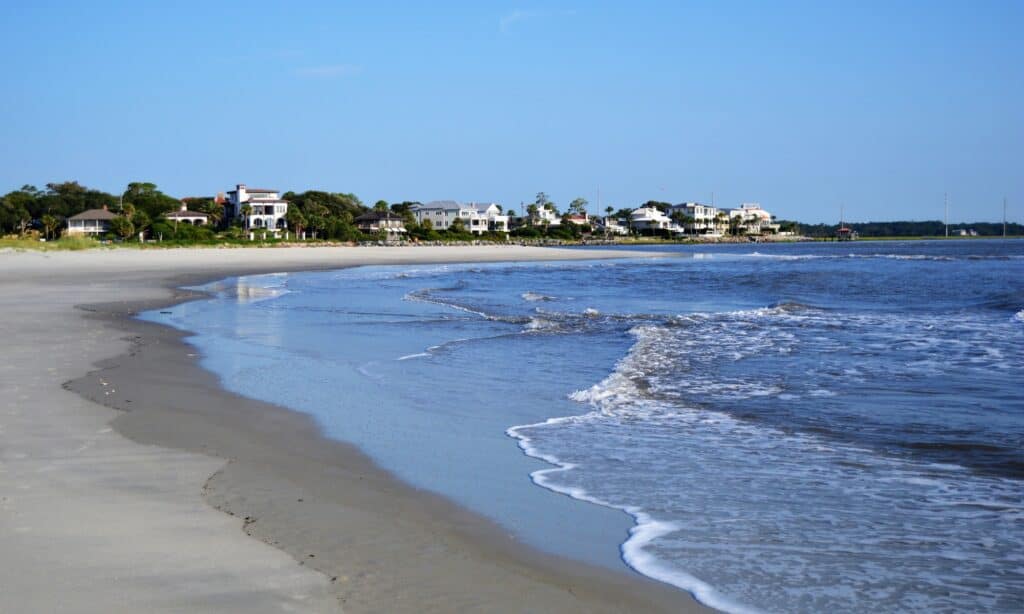
Tsunamis are caused by underwater disturbances or displacement of water, while tidal waves are caused by tides.
©iStock.com/DorothyBlahnik
A tsunami is caused by a seismic disturbance under the sea or from a large displacement of water. Some of the most common causes of a tsunami include tectonic plate shifts, which usually result in earthquakes, a meteor striking the ocean, a volcano erupting, or even a landslide.
A tidal wave is a shallow water wave caused by the gravitational pull of the sun and moon on the earth’s oceans. The tide is the periodic rise and fall of sea level caused by the same gravitational force and the earth’s rotation. Whenever you go to a beach and see waves lapping the shore, that is almost always the result of tidal forces, therefore making it a tidal wave!
Tsunami vs. Tidal Wave: Speed
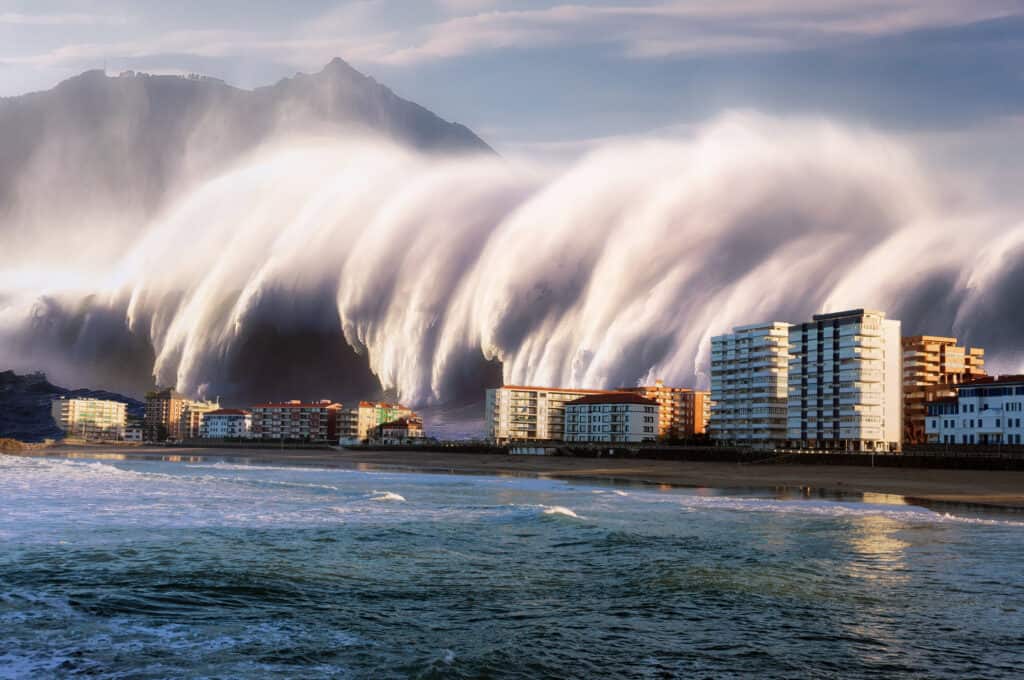
Tsunamis are extremely fast, while tidal waves are much slower.
©Mimadeo/Shutterstock.com
A tsunami can travel at speeds of up to 500 miles per hour (800 kilometers per hour), which is faster than a commercial jet plane. This rapid speed is due to the tremendous amount of energy released by any of the potential causes we’ve listed. A tsunami is more than just a wave of water, but is a wave of energy, which is why it can travel so fast.
On the other hand, a tidal wave is usually much slower. Tidal waves usually move between 10 and 20 miles per hour. A surfer, for example, is able to catch a tidal wave and ride it in without a problem. Any surfer who hopes to surf another day wouldn’t want to catch a 500 miles per hour wave!
Tsunami vs. Tidal Wave: Size
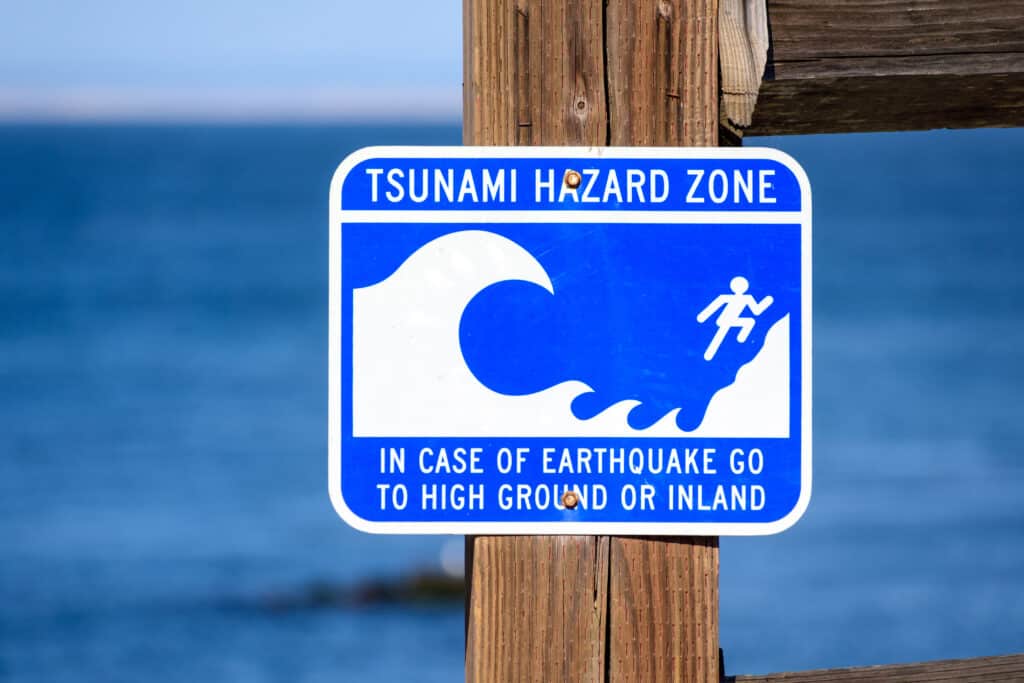
Tsunamis can grow to dozens of feet tall as they hit the shore, while tidal waves are usually only a few inches or feet tall.
©Michael Vi/Shutterstock.com
A tsunami can have a wavelength of hundreds of miles and a height of only a few inches in deep water, but it can grow to dozens or hundreds of feet high near the coast. As it nears the coast, the ground essentially pushes the wave up and into the air, forming the devastating wave that many are familiar with. For this reason, people way out from shore in boats rarely even feel a tsunami sweep under them.
A proper tidal wave can vary in size depending on the location and tidal conditions, ranging from a few inches tall to several feet in height. Depending on the cause and considerations, extremely large tidal waves can be quite dangerous for someone swimming and not looking out.
Tsunami vs. Tidal Wave: Impact and Effects
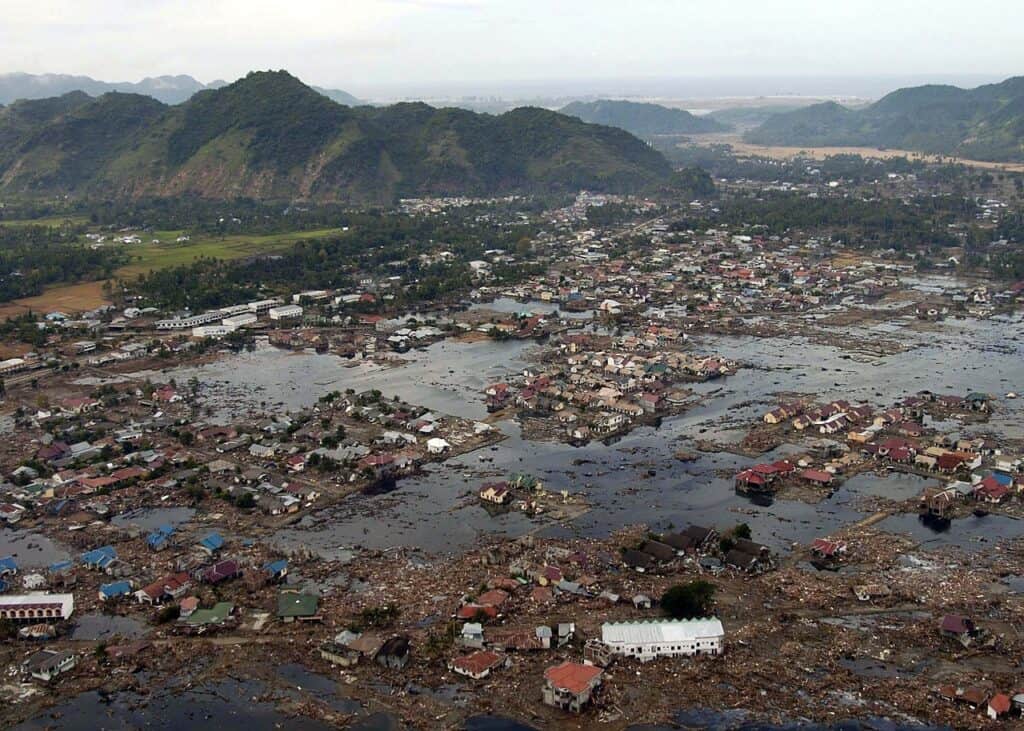
Tsunamis can cause devastation across entire countries’ coastlines.
©U.S. Navy photo by Photographer’s Mate 2nd Class Philip A. McDaniel / public domain
A tsunami can be very destructive when it reaches land, causing flooding, erosion, and damage to buildings and infrastructure, not to mention a potential loss of life. Tsunamis throughout history have caused billions of dollars in damage and killed or injured hundreds of thousands of people.
Tidal waves don’t generally have a negative impact on coastal regions besides the erosion that occurs as they repeatedly hit the shoreline. This erosion is nothing like the erosion that occurs with a tsunami, however.
Tsunami vs. Tidal Wave: Occurrence
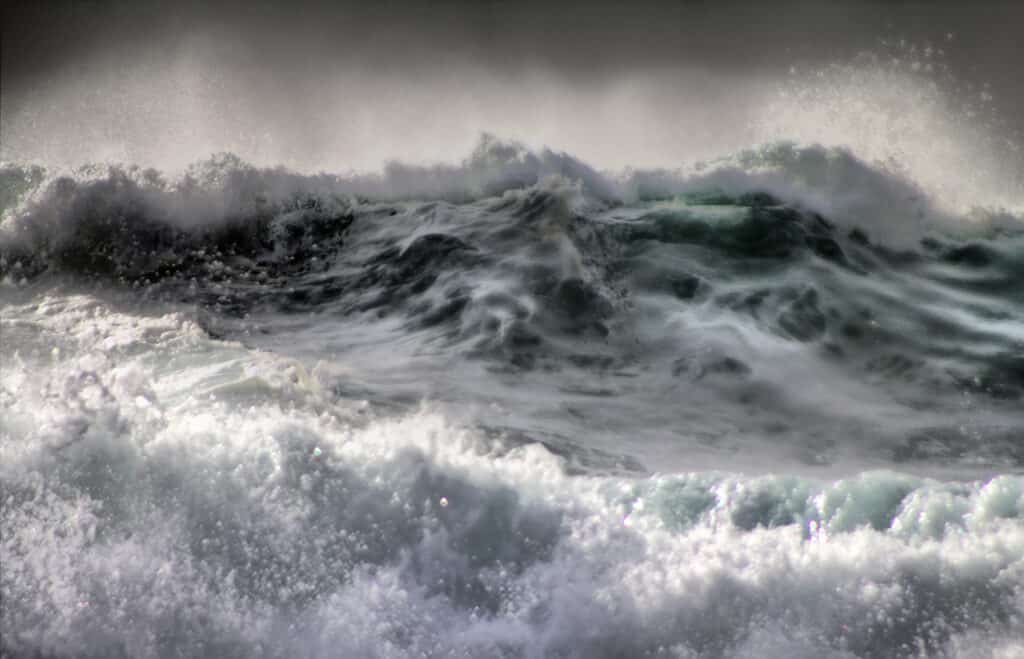
A tsunami could happen anywhere there is a
body of water
, while a tidal wave needs to be large enough to be affected by the moon’s gravitational pull.
©Maximillian cabinet/Shutterstock.com
A tsunami could theoretically occur anywhere there is a large body of water and the potential for a large wave. If a large meteor were to hit one of the Great Lakes, for example, a tsunami could easily occur across the Midwestern United States.
Tidal waves occur when there is a body of water large enough to be impacted by the tidal pull of the moon and the sun as the earth rotates. These occurrences are regular and predictable, however, and happen in accordance with the tides.
The photo featured at the top of this post is © forestpath/Shutterstock.com
Thank you for reading! Have some feedback for us? Contact the AZ Animals editorial team.






